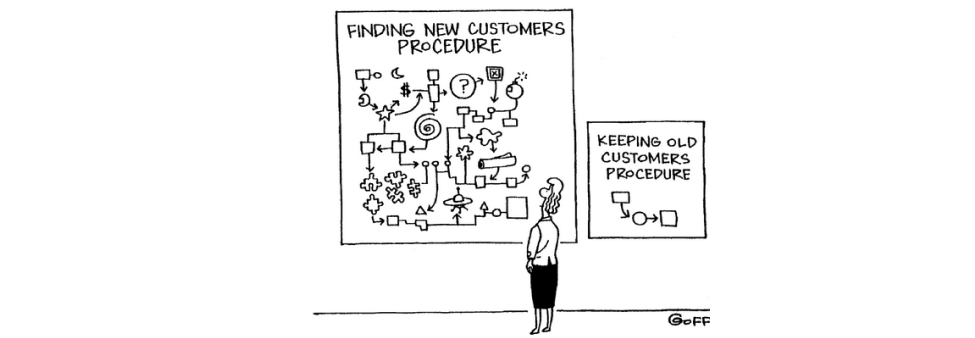In the ever-growing and highly competitive world of eCommerce, it’s essential for businesses to not only attract new customers but also retain existing ones. Customer retention is the key to building a loyal customer base and achieving long-term success. Research shows that it costs five times as much to attract a new customer than to retain an existing one. Furthermore, increasing customer retention rates by just 5% can boost profits by 25% to 95%. With these statistics in mind, it’s clear that eCommerce businesses should focus on customer retention as much as customer acquisition.

In this guide, we’ll explore what customer retention means in an eCommerce context, provide strategies for boosting your average customer retention rate in eCommerce, and discuss important metrics to monitor to ensure your retention efforts are paying off.
Defining eCommerce Customer Retention Rate
Customer retention rate in eCommerce refers to the percentage of customers who return to purchase from a business after their initial purchase. This metric is important as it indicates how well a business is retaining customers and building a loyal customer base.
Retaining existing customers is cheaper than acquiring new ones as it requires building a positive relationship with them, providing excellent customer service, and delivering high-quality products or services. This is often more cost-effective in the long run.
Moreover, loyal customers tend to make repeat purchases and refer others to the business. According to research, repeat customers are more profitable than new ones as they spend more money per transaction, are less price-sensitive, and are more likely to refer others to the business.
How to calculate customer retention rate in eCommerce?
(Customer Retention Rate) = (Number of Customers Who Made a Repeat Purchase ÷ Total Number of Customers) x 100
Why Customer Retention Rate is Important in eCommerce
By monitoring this customer retention metrics in eCommerce, you can assess if your efforts are successful or if changes are necessary. A decreasing retention rate may signal dissatisfaction with your products or services, while an increasing rate may indicate successful efforts to build customer loyalty.
Additionally, tracking your eCommerce retention rate can help you identify areas where you need to improve. For example, if many customers aren’t returning after their first purchase, you can examine your onboarding process or follow-up communication to enhance the customer experience and encourage repeat purchases.
Key Customer Retention Metrics in eCommerce
As an eCommerce business, it’s important to track customer retention metrics to understand how well you are retaining customers over time. Two important metrics to track are the repeat purchase rate and churn rate.
The repeat purchase rate is the percentage of customers who make more than one purchase from your store. This metric shows how well the business is in retaining its customers and encouraging them to make repeat purchases. A high repeat purchase rate is a good indication that your customers are satisfied with their purchases and the overall customer experience.
On the other hand, the churn rate is the percentage of customers who stop buying from your store over a specific period. A high churn rate can indicate that customers are dissatisfied with your products, pricing, or customer service, and are choosing to buy from your competitors instead. Tracking churn rates can help businesses identify issues that are driving customers away and take steps to address them.
Other important metrics include customer lifetime value (CLV), customer acquisition cost (CAC), and net promoter score (NPS).
CAC: It measures the cost to acquire a new customer over a specific period. A lower CAC implies more efficient sales and marketing efforts.
CLV: It measures the total value a customer will bring over the entire relationship with the company. A higher CLV indicates more valuable customers in the long term.
NPS: It measures the likelihood of a customer recommending the business to others. A higher NPS implies more satisfied customers likely to recommend the business.
By monitoring these eCommerce retention metrics, you can make data-driven decisions about where to invest your resources to improve customer retention.
Tips for Improving Customer Retention Rate in eCommerce
There are many strategies you can use to improve customer retention in eCommerce. Here are some of the most effective ones:
1. Providing excellent customer service: Ensure you are responsive to customer inquiries and complaints and resolve any issues quickly and effectively. Train your customer service team to be knowledgeable, friendly, and empathetic, and make it easy for customers to reach you through multiple channels such as phone, email, and chat.
2. Building a community for your brand: Customers are likely to stay loyal if they feel like they are part of a community. Businesses should invest resources in creating and moderating online communities where customers can share their experiences, ask questions, and connect with others who share their interests.
3. Personalizing the customer experience: Use data and analytics to personalize the customer experience by recommending products based on their previous purchases, offering specific discounts and promotions, and sending tailored messages and emails.
4. Creating loyalty programs: Offer rewards, such as points or discounts, for repeat purchases, and make it easy for customers to redeem their rewards. Consider partnering with other businesses to offer joint loyalty programs, which can increase the value of the rewards for customers.
5. Offering incentives for repeat purchases: In addition to loyalty programs, you can also offer other incentives to encourage repeat purchases. For example, offer free shipping on orders over a certain amount, or provide a discount on the customer’s next purchase when they refer a friend.
6. Customer feedback and acting on it: It’s important to listen to your customers and make changes based on their feedback. Prompt customers to leave reviews and provide feedback on their experiences, and use this information to improve your products, services, and customer experience.
Case Studies of Successful Customer Retention Strategies in eCommerce
Through a variety of strategies, many eCommerce companies have successfully increased customer retention rates. For instance, 67% of Amazon Prime members renew their subscriptions due to the company’s wide selection of products and top-notch customer service, which has a positive impact on customer loyalty.
Similar results were obtained by Sephora’s loyalty program, Sephora Beauty Insider, which increased customer retention by 7.3%. Another example is Zappos, which has a strong brand community, offers excellent customer service and allows free returns and exchanges, all of which contribute to a customer retention rate of roughly 75%.
The success of these companies demonstrates the value of putting in place customer retention strategies that prioritize personalized customer experiences, loyalty programs, providing rewards, and establishing brand communities.
Conclusion
Customer retention is crucial for the long-term success of eCommerce businesses. Strategies such as excellent customer service, personalization, loyalty programs, and incentives can improve customer satisfaction and increase their lifetime value. Tracking metrics like repeat purchase rate and churn rate can help identify areas for improvement.
Retaining customers can generate repeat business, positive reviews, and referrals leading to increased revenue and growth. Therefore, it only makes sense for businesses to prioritize customer retention and implement effective strategies for a sustainable, profitable, and customer-centric model.

Chirag Bhavsar Founder & CEO, Coduzion
Chirag Bhavsar is Founder and CEO at Coduzion. Gusty, Passionate, and a Sports freak. Loves to spend time reading financial books and playing outdoor games as soon as He is away from his desk. He always loves to take on new challenges and get good at them.










